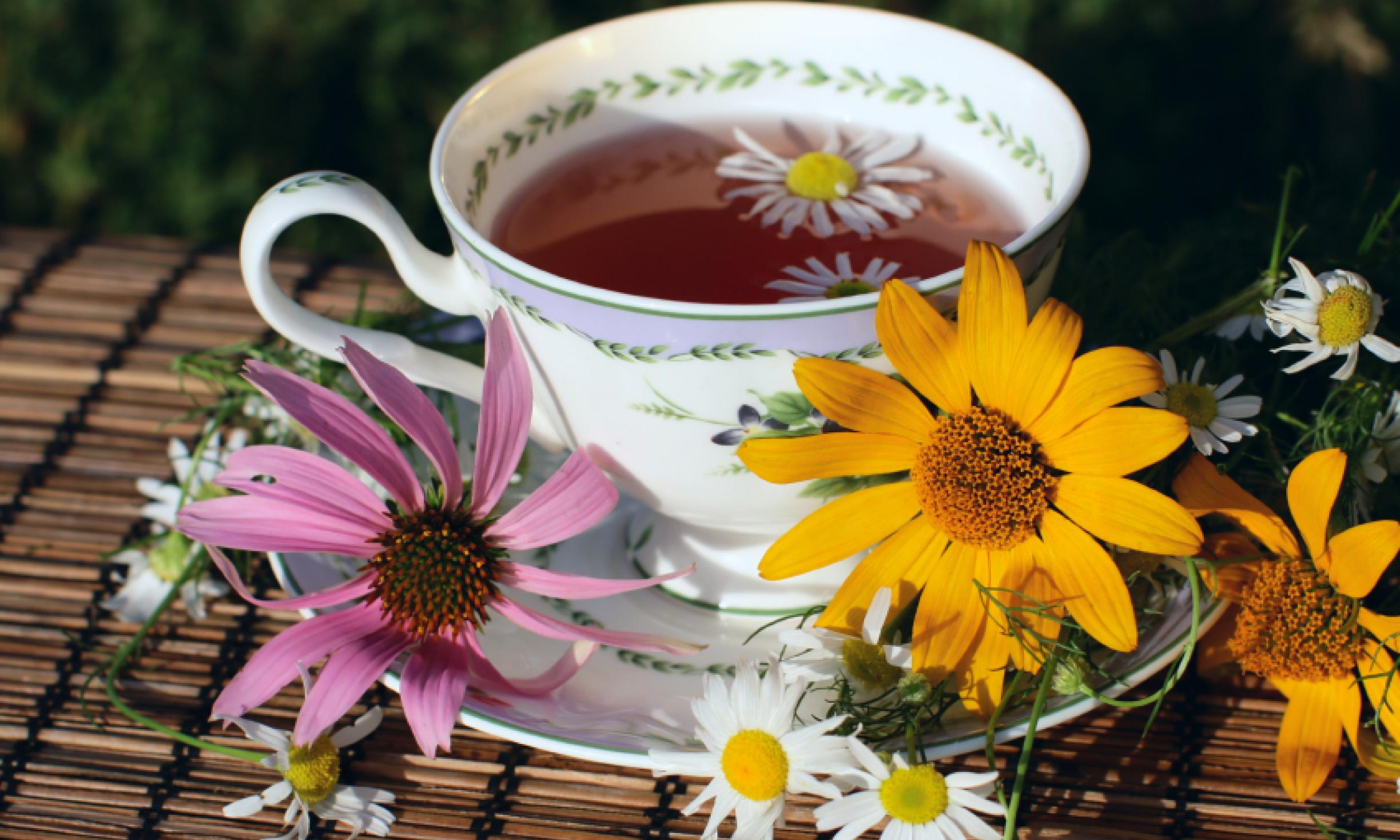In your herbal pharmacy you transform fresh and dried plants into natural herbal remedies, and making herbal tea remedies is a great way to do this. Learning to identify and use the common plants around you is easy and exciting, beneficial, and safe.
Even one day’s work in the field, forest, and kitchen can provide you with many years’ worth of natural herbal remedies. When you make your own, you know for sure what’s in it, where it came from, when and how it was harvested, and how fresh and potent it is.
Stock your herbal pharmacy with your own foraged or cultivated herbs; expand your resources and experiment with new herbs by buying dried herbs from reputable sources.
Whether you buy or make your own medicines, remember, herbal tea remedies may not work or may work incorrectly if they aren’t prepared correctly.
Water Bases
Our bodies are based on water and so are plants. We digest in a water base. In most instances, I prefer natural herbal remedies in a water base (also known as herbal tea remedies). Nourishing herbs such as Comfrey, Nettles, and Raspberry leaf are at their best when prepared in water bases, for water is best able to extract and make accessible their full range of vitamins, and nutrients.
Water-based natural herbal remedies spoil rapidly and must be prepared at or near the actual time of use. However, you can store dried herbs for long periods, ready to use in a water base.
Water-based preparations are called teas, tissanes, infusions, decoctions, and syrups. They may be used as soaks, baths, douches, enemas, eyewashes, poultices, compresses, and fomentations. They are all made by soaking fresh or dried plant material in water (usually boiling).
Herbal tea remedies are the standard water-based herbal preparation; even restaurants know how to make it. At fancy ones, they call it a tissane.
Use one teaspoon dried herb per cup of boiling water. Add an extra teaspoonful for the pot. Let it steep in your cup or the pot for up to twenty minutes. Honey, lemon, and milk are medicinal additions. (Don’t give infants honey.)
Volatile herbs are easily extracted into water and therefore prepared as teas. Chamomile, Pennyroyal, Shepherd’s Purse, Ginger, Anise and Fennel seeds, Valerian, Catnip, and Lobelia are examples of volatile herbs.
Infusion is the most medicinally potent water-based herbal preparation. There are a great many definitions and recipes for preparing infusions; some herbalists use the term “infusions” interchangeably with “tea.”
My medicinal infusions contain a great deal of herbal matter and are steeped for a long time. The result is a liquid much thicker and darker than an herbal tea, leaving no doubt that you are dealing with a medicine, not a breakfast drink.
Prepare infusions in pint and quart canning jars. A teapot or cup is impractical for the long brewing an infusion requires and their openings allow volatile essences and vitamins to escape. Canning jars rarely break when filled with boiling water. They make it easy to measure the amount of water used in the brew. An infusion brewed in a jar is convenient to carry along to work, school or wherever, and this increases the probability that the infusion will be consumed.
And then there’s the “wonder water” effect. Wonder water sounds like a new hype, but it is an interesting principle discovered by some researchers at Organic Gardening magazine. They found that plants absorbed nourishment more thoroughly and easily from water that had been boiled, poured into a jar, covered tightly, and allowed to cool. They maintained that gas molecules normally held in water interfere with the plants’ rapid and complete assimilation of nutrients dissolved in water.
These dissolved gases are released upon boiling. If a jar is filled with boiling water and capped tightly, the gas molecules cannot be reabsorbed into the water from the air. This s exactly how I prepare an infusion. And I suspect that people, like plants, benefit from and respond strongly to the wonder water effect. Enjoy your herbal tea remedies!
